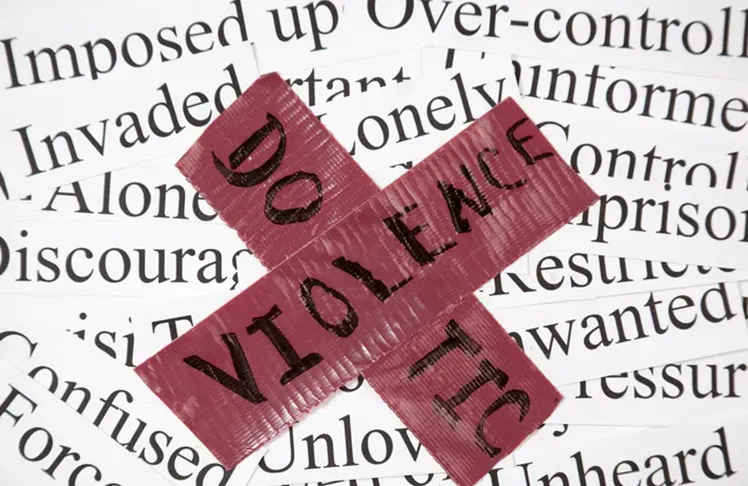
The data is both grim and disturbing: Black women are being slain at rates nearly triple those of white women. The killers, data shows, are usually men with faces familiar to the victims — typically, husbands or romantic partners, armed with guns.
Those are the top lines from a new Violence Policy Center report on intimate partner violence released last week, timed to coincide with Domestic Violence Awareness Month.
Despite representing around 14% of the U.S. female population, “Black women have the highest rate of homicide victimization by males in our nation and are almost always killed by someone they know,” Kristen Rand, government affairs director for the Violence Policy Center, said in a prepared statement.
“This is an ongoing crisis that demands immediate public attention and increased resources in support of domestic violence prevention efforts,” she said.
The report found that 733 Black women and girls died at the hands of male perpetrators in single-victim, single-offender incidents — nearly one-third of all female homicide victims in that category nationwide. What’s more, nine out of 10 Black women were intimate partners of the offender.
Guns and Arguments: A Deadly Mix
The VPC’s latest numbers highlight another disturbing fact: firearms, especially handguns, are overwhelmingly the weapon of choice in most of the homicides.
In cases where the weapon was identified, 3 out of 4 Black female victims were fatally shot; of those, 61.5% were killed with handguns. In 2011, around half of Black female IPV victims were killed by guns; by 2023, that number had skyrocketed to around 75%
Many of these homicides happened during an argument or conflict; only around 10% of the homicides were tied to other felonies, like rape or robbery.
The average age of victims is about 37 years old, but 7.5% were younger than 18 and 6.7% percent were older than 65.
Fewer Visible Means of Support
This year’s observance of Domestic Violence Awareness Month takes place amid a sobering backdrop: the government shutdown. The Department of Justice offices that administer grants to domestic violence prevention services have been furloughed, upending funding pipelines at a moment when victims need support most.
“These are people who are doing God’s work, providing direct assistance to all kinds of victims of violent crime,” one former DOJ official told Politico.
Tonia Moultry-Pace, interim president and CEO of the National Network to End Domestic Violence, warned that even temporarily halting funding puts lives at risk.
“Safety is urgent, every single day,” she said. “When funding stops or is delayed, programs face impossible choices: turning survivors away, reducing services, or closing shelter beds. Survivors and their children should never pay the price for a government shutdown.”.
Not Just Homicide
Harrowing as it is, the IPV report reveals only the tip of the iceberg.
According to the Centers for Disease Control and Prevention, approximately 41% of women and 26% of men have experienced unwanted sexual contact, physical violence, or stalking by an intimate partner. More than 61 million women and 53 million men have faced psychological abuse, such as stalking or verbal taunting.
The trend lines worry researchers. A mid-year analysis of 42 U.S. cities found that, in the first half of 2025, domestic violence was the only category of violent crime to rise, by roughly 3 percent. Nearly all other categories of violent crime — aggravated assault, sexual assault, homicide — have declined.
Reported instances of domestic violence in those cities in 2025 were higher than during the same period in 2024.
“The critical issue of domestic violence is undeniably a profound community problem. The reality is that all of us know someone who has been or is currently experiencing abuse in their relationships,” says Moultry-Pace. “Standing with survivors and their children means raising awareness but also ensuring that lifesaving services are fully and reliably funded, so that help is there when survivors need it most.”



